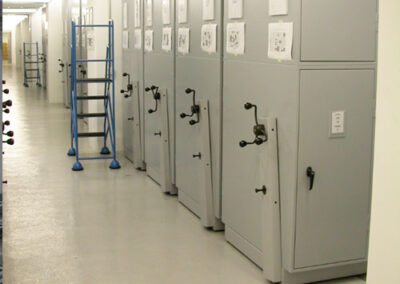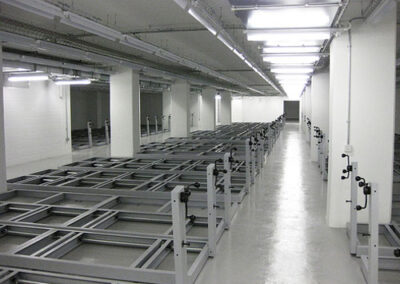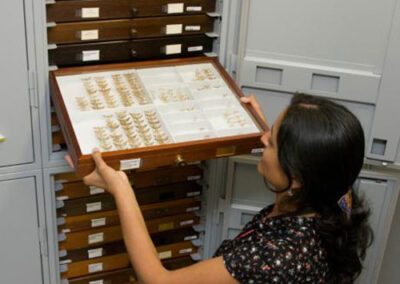About the Client
Now completed, the Natural History Museum Darwin Centre Cocoon is an eight-story concrete structure surrounded by a glass atrium that houses a collection of 17million entomology specimens and 3million botany specimens.
Designed by Scandinavian architects CF Møller, the structure is 60m long, 12m wide and covers 3,500 square metres. It offers 1,040 square metres of laboratory space with the top three floors devoted to housing galleries. The facility houses some of the museum’s oldest and most valuable objects, among them are specimens brought back by Charles Darwin from his Beagle voyage.
Requirement – High Density Mobile Storage
The team at the Natural History Museum were looking to expand their collection storage, research and conservation facilities.
Working together with CF Møller architects they planned to build a contemporary new facility along side their existing Victorian one, to not only house specimens but also provide lab space and public access. A visitor route was to pass up and through the facilities into an interactive learning space, allowing observation of the scientific and research activities, without interrupting scientific work in progress.
At the centre of the project were the specimens. These world class collections needed to be stored in optimum conditions, with regulation of temperature, light and humidity. Further, to contain any potential pest infestation, the work and storage areas were required to be separated, to avoid the risk of cross contamination.
The specimen storage facilities were to span 5 floors and would require expertise in both efficient, high-density storage and the engineering of the unique environments that were required across their huge inventory.
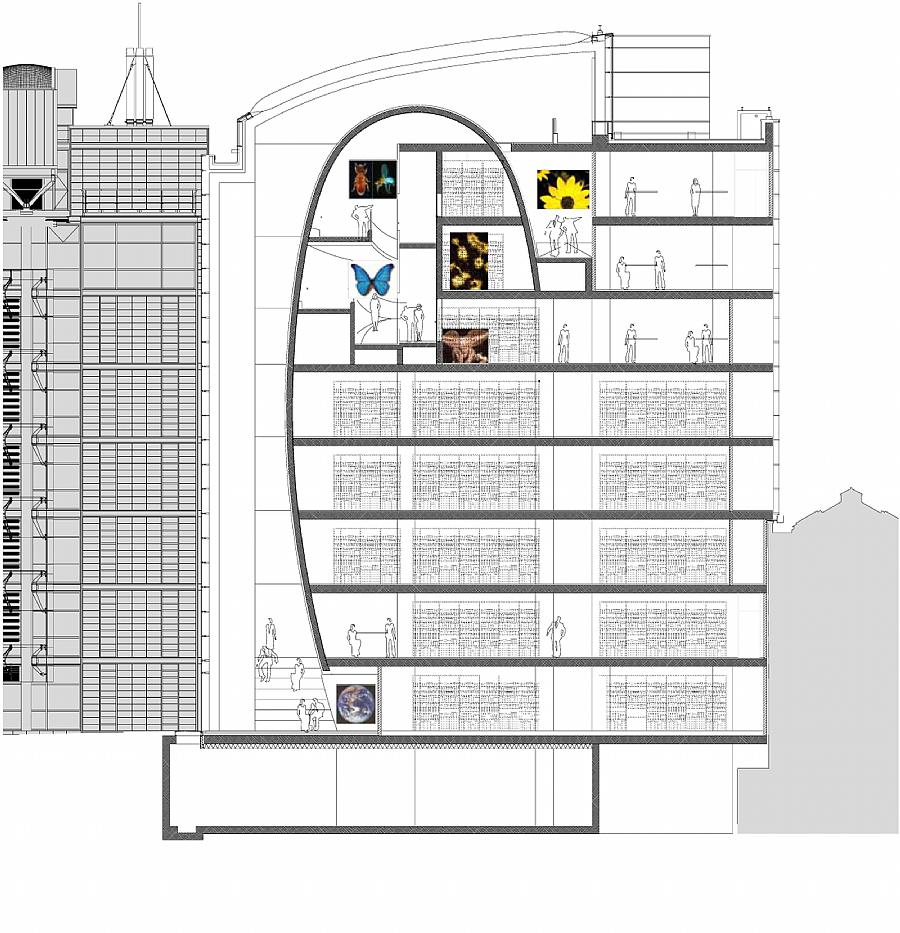
The above plan by CF Møller shows the cocoon, within its glass atrium, linked to Alfred Waterhouse’s original Victorian building.
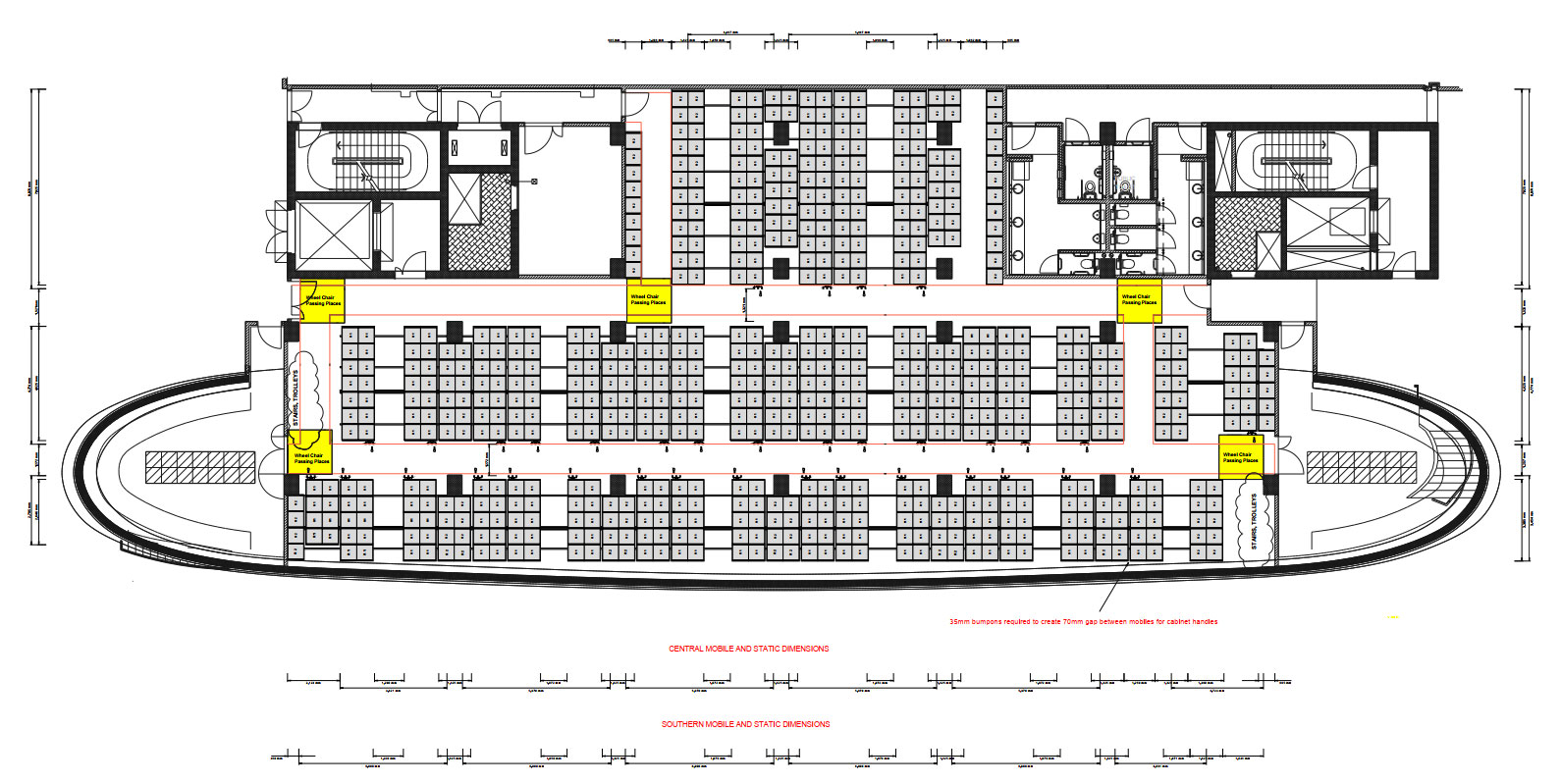
The above plan demonstrates the pure size of the facility and the huge amount of specialised mobile storage that was installed.
The Solution – Mobile Storage to Maximise Space.
In order to achieve the perfect conditions for their specimens the project required bespoke entomology cabinets which were unique and required specialist knowledge. These cabinets were selected from a specialist supplier and Rackline was awarded the contract to manufacture, supply and install the mobile
high density bases to maximise the space.
The entire installation of mobile storage carriages, cabinets and floor tracks spanned over 5 floors. Back room collections will be kept at a constant 17C and 45% humidity and include its 17million insect and 3 million botany specimens.
Rackline’s Technical Director Andy Reed worked in partnership with the cabinet supplier to ensure that the mobile storage carriage specifications and performance matched the requirements of both the cabinet installation and the Museum’s cleaning and maintenance requirements.
Working closely with the contractor, the floor tracks for the the mobile storage solution were set directly into the concrete floor screed with pinpoint accuracy. This was achieved via close communication, to ensure a clean and flush finish.
Find out more:
If you work within Museums, Heritage or Archives and you’re looking for the perfect storage for your collection then look no further. Rackline have been supplying archive storage solutions into these sectors since 1984. Why not drop our team your details below and arrange for a free space plan? Discover how you can make more use of your space.

